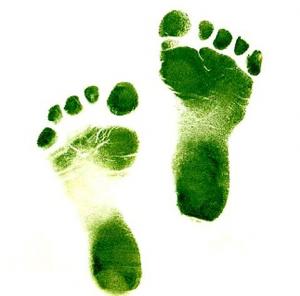
If you are looking to reduce your carbon footprint making organic baby food is a great way to go. Consider the green facts:
Organic - Organic fruits and vegetables are the best choice for making baby food. They are the most natural ingredients and organic foods drastically reduce harm to the environment.
Less waste – When you make your own baby food, there are no jars, labels or metal lids to dispose or to recycle.
No factory required - Just a little energy to steam foods and run a blender is all you need to make your baby’s meals! Did someone say near “zero” greenhouse gases?
Local – Your baby’s food does not need to trucked to you from a factory thousands of miles away. Instead you can simply buy organic produce from your local farm market and get started.
Healthy - Homemade baby food is safe and nutritious. Baby food jars are often lined with bisphenol-A, a controversial hormone disruptor that should be avoided. In addition, homemade baby food has no preservatives, additives or chemicals – it is pure and natural goodness.
Homemade baby food and healthy meals in less than 30 minutes per week:
To prepare: Wash, peel and cut fresh fruits or vegetables, then stove-top steam or microwave in less than 10 minutes. Create a very smooth texture with a blender of food processor. Add a little water if needed to reach pudding-like texture. Pour into baby food storage trays, cover and freeze overnight. Pop cubes out and store in freezer in an air-tight container or freezer bag. Frozen baby food cubes last up to 2 months.
To Serve: Select frozen baby food cubes from the freezer place in a dish and thaw or warm. Stir food before serving and check the temperature. If you want to thicken something, use baby cereal, yogurt or mashed banana. For thinning, use breast milk/formula, 100% juice or low-sodium soup stock.
Making healthy Meals: You can mix different baby food cubes together to create tasty, healthy meals. You can also add yogurt, melted cheese, ground nuts, mashed pasta/rice to introduce new flavors and textures. Here are a few ideas:
- Green peas and sweet potatoes
- Butternut squash and mashed banana
- Broccoli, cauliflower and melted cheese
- Peaches, pears and oatmeal baby cereal
- Black beans, corn and rice
- Strawberries, apples, yogurt and ground pecans
The bottom line: Making baby food is a great gift to give the environment and your baby. Plus homemade baby food tastes great. Who knows? Your baby may even grow up to like the taste of Brussels sprouts and mangoes!
Apple Puree
6 medium golden delicious apples
Step 1: Prep - Wash, peel, core and cut apples into one-inch (3 cm) slices.
Step 2: Cook - Place apples in a microwave safe dish. Cover. Cook 5 minutes and let stand for 5 minutes. Cook an additional 5 minutes. The apples are done when they can be pierced easily with a fork.
Step 3: Puree - Place apples and cooking juices into a blender or a food processor. Puree to a smooth texture.
Step 4: Freeze - Spoon into So Easy Baby Food Trays or ice cube trays. Cover. Place in freezer eight to 10 hours or overnight. Remove cubes from trays, place in storage container or freezer bag, and return immediately to the freezer.
Makes 24 1-ounce servings. Stays fresh for two months in the freezer.
To serve, select frozen apple cubes from the freezer, defrost and warm, check the temperature and feed.
Age to introduce: About 6 months.
About the author: Cheryl Tallman is the co-founder of Fresh Baby, creators of the award-winning So Easy Baby Food Kit, available at many fine specialty stores, BabiesRUs.com, Target.com and national chains including Whole Foods Markets. Visit Cheryl online at www.FreshBaby.com for more delicious tips
.
